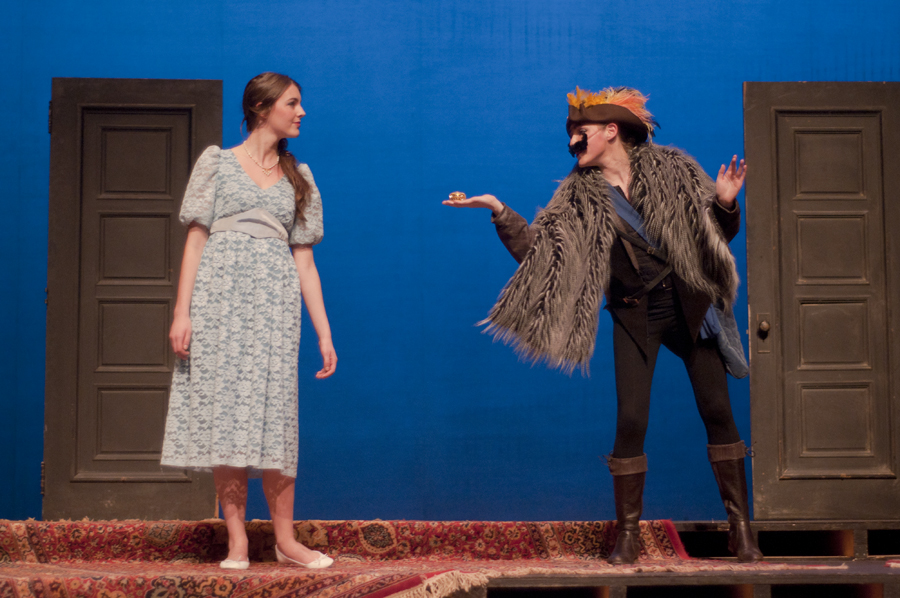Fear of the feminine captured by an entirely female cast, McGill English department’s production of The Revenger’s Tragedy by Thomas Middleton adds a layer of gendered irony to the Jacobean-era tragedy. This directorial choice by Patrick Neilson illuminates the period’s anxiety regarding women’s sexuality, bringing together a variety of lively and talented young women to convey the parody of the early 17th century revenge tragedies.
The play focuses on Vindice’s vengeful scheme against the corrupt duke for the murder of his beloved Gloriana. The revenger disguises himself as the low-life, Piato, with the help of his brother Hippolito, to infiltrate the corrupt Italian court. In a ploy typical of revenge plays, the brothers’ plan faces several obstacles—the first being Piato’s hire by the duke’s son, Lussurio, to seduce his chaste sister Castiza.
The subplot examines the duke’s less-than-noble family, which unravels more than the duchess’ corset during a sex scene, adding further conspiracies to the complex tale. Meanwhile, Vindice and Hippolito pursue the duke’s grizzly downfall. With the foreboding thunderclaps, a dubstep masquerade, and recurring references to Hamlet, it is unsurprising that the brothers’ increasingly intricate plan turns comically bloody. Pay attention to this black comedy: one wandering thought and you’ll miss who ‘accidentally’ killed whom.

A striking tableau, one of many to come, opens the play to introduce the larger than life characters, clothed exquisitely by Catherine Bradley’s costuming class. Like the production, the costumes are reminiscent of the period, with a modern edge; a theme also congruent with Carling Tedesco’s innovative sound design. In contrast to the traditional Baroque music that frames the earlier scenes, Tedesco’s choice of heavy beats during the masquerade are a shocking delight. This edge adds to the tension of the climactic blood bath spiralling out of control.
The cast’s stylized character choices provide comic relief while sustaining the energy of the play—a difficult task considering the twisted plot. Adriane Epprecht’s portrayal of the immoral duke drives the first act until she is pinned to the floor by her tongue. Her bold, physical choices are effective, and made for the most of the memorable scenes in the play. Along with Rebecca Babcock (Hippolito) and Cece Grey (Vindice), Epprecht commits to Sam Cooper’s (Lussurio) convincing fight choreography. Although the murderous spectacles gain momentum in the second act, Epprecht’s vivacity is missed.
The relentless Vindice, and his alter ego Piato, maximize stage time, and as a result, Grey is rarely offstage. The play depends on her character’s vendetta, and therefore her energy. Grey does not disappoint. Her scenes with Sam Cooper (Lussurio) are particularly hilarious because of her rapid venomous asides before her pledges to serve Lussurio. However, Grey is, at times, lost under Piato’s large moustache, and unfortunately missed an opportunity to differentiate between her character’s two faces. Cooper’s Lussurio was excellent. Her chemistry with Grey made their scenes of lengthy dialogue dynamic, and her physicality and vocal presence commanded the stage—like the heir to a dukedom should.
The women give an impressive performance. Their dedication to their eccentric characters heightens the impact of the play’s dark humour. This polished performance is the product of a strong ensemble crew and cast, who will have you marveling at the constant dynamic turn of events.
The Revenger’s Tragedy runs from Nov. 29 until Dec. 1 at Moyse Hall, Arts Building. Student tickets $5.









